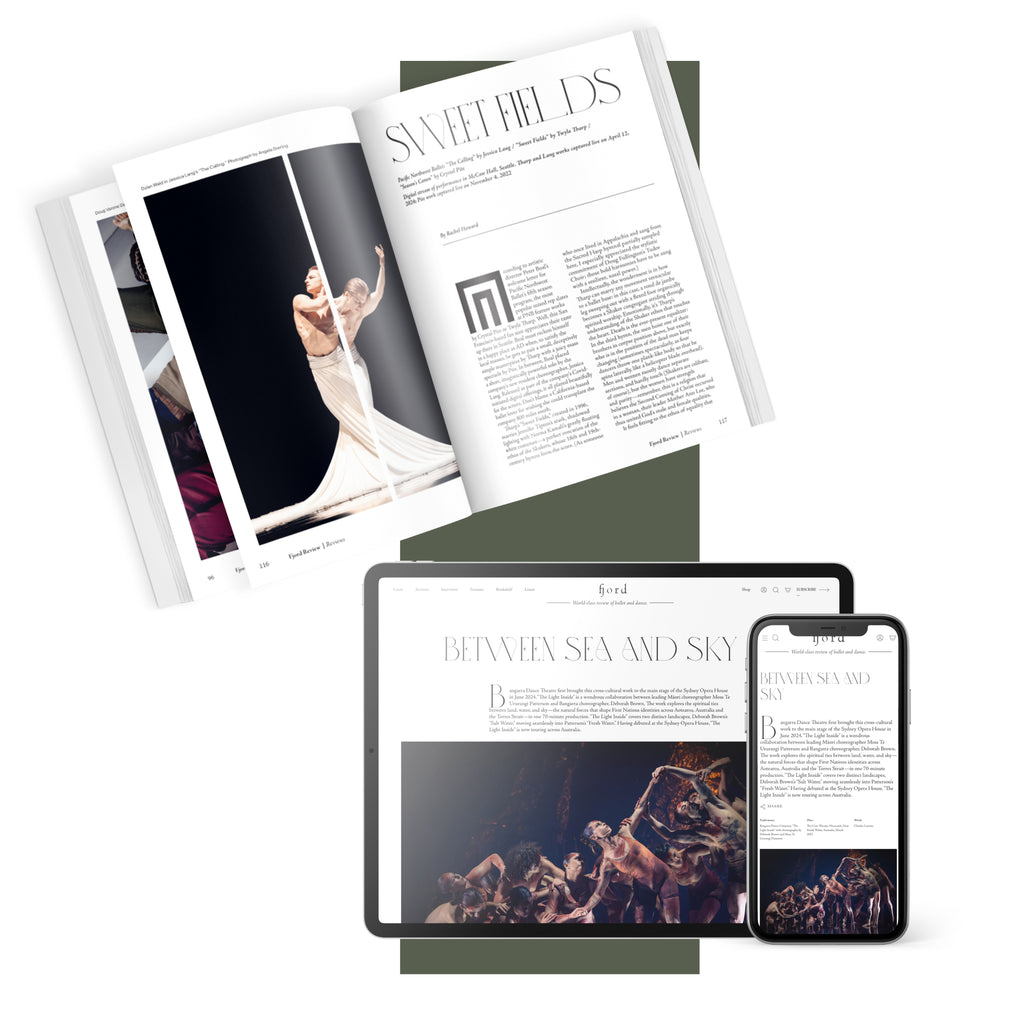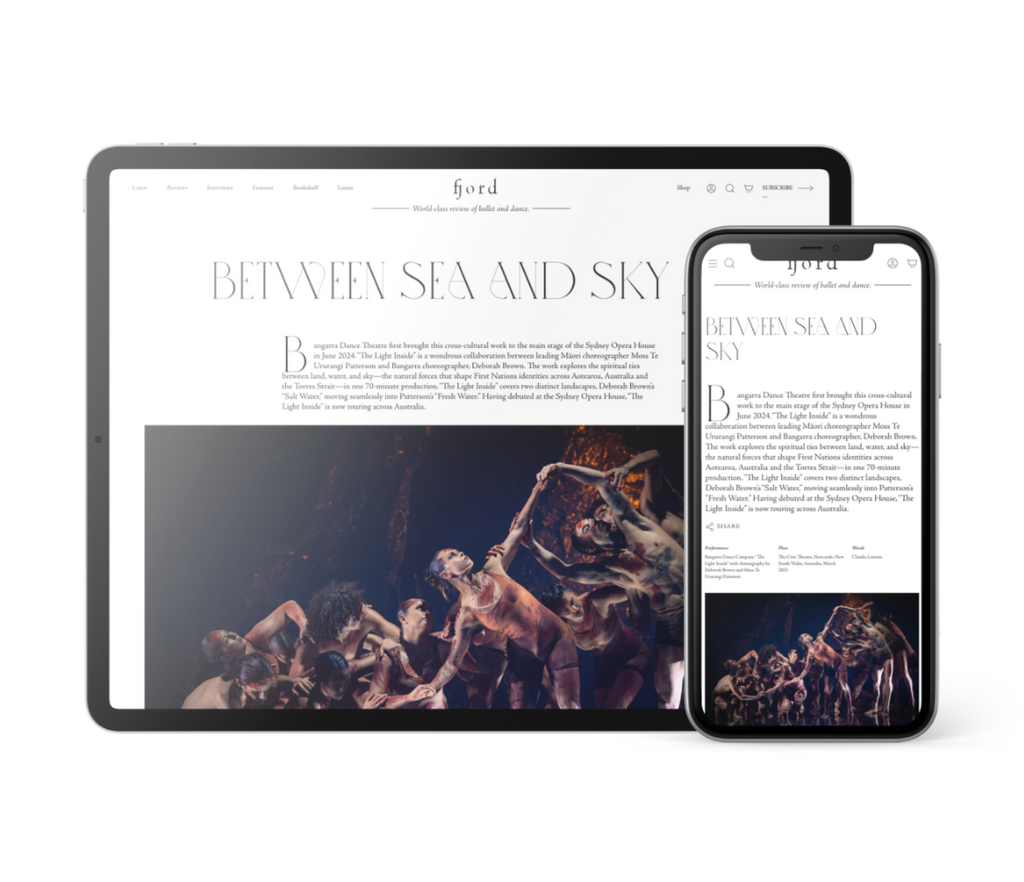Talent Time
It’s “Nutcracker” season at San Francisco Ballet—36 performances packed into three weeks—which means that the company is currently serving two distinct audiences.
Continua a leggere
World-class review of ballet and dance.
In 2019, Pam Tanowitz gripped London with “Four Quartets,” an ode to T.S. Eliot that sparked five-star reviews and declarations of her supremacy in the 21st-century dance theatre scene. Her latest work sports the same delicate composition and taut formalism that made “Four Quartets” a riveting watch, this time splicing Jewish dance influences—including Israeli folk traditions—with Tanowitz’s own crisp brand of modern dance to create something layered and redolent. “Song of Songs” is liquid at times, fragmented at others, a bodily manifestation of the tumult and ache coursing through the biblical love poem it’s named after.
Performance
Place
Words



“Uncommonly intelligent, substantial coverage.”
Your weekly source for world-class dance reviews, interviews, articles, and more.
Already a paid subscriber? Login

It’s “Nutcracker” season at San Francisco Ballet—36 performances packed into three weeks—which means that the company is currently serving two distinct audiences.
Continua a leggereLast week I caught up with choreographer Pam Tanowitz and Opera Philadelphia’s current general director and president, countertenor Anthony Roth Costanzo to talk about “The Seasons,” the company’s latest production premiering at the Kimmel Center’s 600-plus seat Perelman Theater on December 19.
Continua a leggereIf Notre-Dame remains one of the enduring symbols of Paris, standing at the city’s heart in all its beauty, much of the credit belongs to Victor Hugo.
Continua a leggereWhen dancer and choreographer Marla Phelan was a kid, she wanted to be an astronaut. “I always loved science and astronomy,” Phelan said.
Continua a leggere
comments